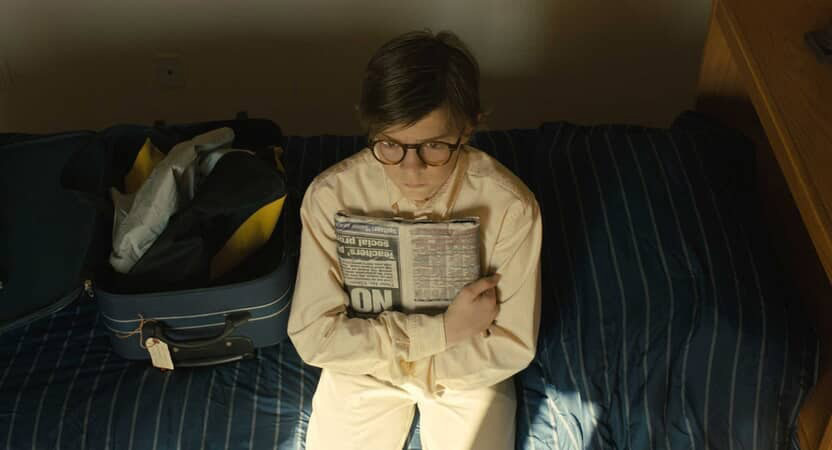
Based on the novel by Donna Tartt, The Goldfinch tells the story of Theodore Decker (played by Oaks Fegley and later, Ansel Elgort) who, as a young boy, is involved in what can be surmised as a terrorist attack. While visiting the Metropolitan Museum in New York an explosion occurs and Theodore loses his mother in the process. After the explosion causes massive carnage, Theo stumbles through the museum and somehow manages to salvage a painting from the wreckage. The work is by artist Carel Fabritius, titled “The Goldfinch”, which he hides in his backpack and decides to keep as a memento. As Theo transitions into adulthood, he develops a deep connection to this painting and witnesses the effects it has on the people he meets throughout his life.
John Crowley’s film incorporates all the elements of dramatic storytelling through its use of sets, characters and atmosphere. As the film progresses, audiences are introduced to a film that integrates intricate settings and complex characters. Due to this, Crowley’s narrative becomes both enthralling and bittersweet in nature.
Crowley immediately sets a melodramatic tone at the beginning of the film through his use of aesthetic lighting, ornate set pieces and a despondent narration from Theo, due to the burden of guilt he carries over his mother’s death. Through this somber yet moving voiceover at the start of the film, audiences are given a taste of the protagonist’s outlook on life and the internal battles he incessantly faces because of it. No matter how many people tell Theo that his mother’s death was not his fault, the feeling of remorse overtakes him to the extent that he begins to question his worthiness as a person. These traits are visually apparent through the protagonist’s ponderous facial expressions and drained body language.
Actors Oaks Fegely and Ansel Elgort captivate viewers through their portrayal of the protagonist Theodore Decker, at various stages of life. They convincingly portray an enigmatic character that becomes conflicted in terms of how he sees the world, and others around him. Where Fegley depicts the theme of childhood innocence undergoing trauma, Elgort projects the concept of the various burdens and conflicts that accompany adulthood. As Theo struggles to understand his sense of self, we, as viewers, are given the opportunity to empathize with him. He therefore becomes an individual who is easily identifiable to many.
In both a literal and metaphorical sense, many significant parallel themes of confinement can be drawn between Theo and the “Goldfinch” painting. While the bird in the portrait is literally imprisoned by a chain on its foot, preventing it from flying, the protagonist figuratively becomes a prisoner of regret and survivor’s guilt. This becomes his own “chain,” which psychologically hampers him from moving forward in life and achieving a sense of confidence. As much as others tell him otherwise, this “chain” of guilt continually weighs him down like an emotional anchor. In addition, this notion can be related to Theo’s Russian-Ukrainian friend, Boris Pavlikovsky (Finn Wolfhard and later, Aneurin Barnard) who, as a young boy, faces physical abuse from his father and is later confined to a life of criminal activity as an adult. Taking this into account, allows Crowley’s film to become representative of how in life, many of us face different levels of confinement and that we each have our own ways of responding to it.
Directed by John Crowley.
Producers – Nina Jacobson and Brad Simpson
Screenplay –Peter Straughan
Based on the book The Goldfinch by Donna Tartt
Stars – Ansel Elgort; Oaks Fegley; Aneurin Barnard; Finn Wolfhard; Sarah Paulson; Luke Wilson; Jeffrey Wright; Nicole Kidman

